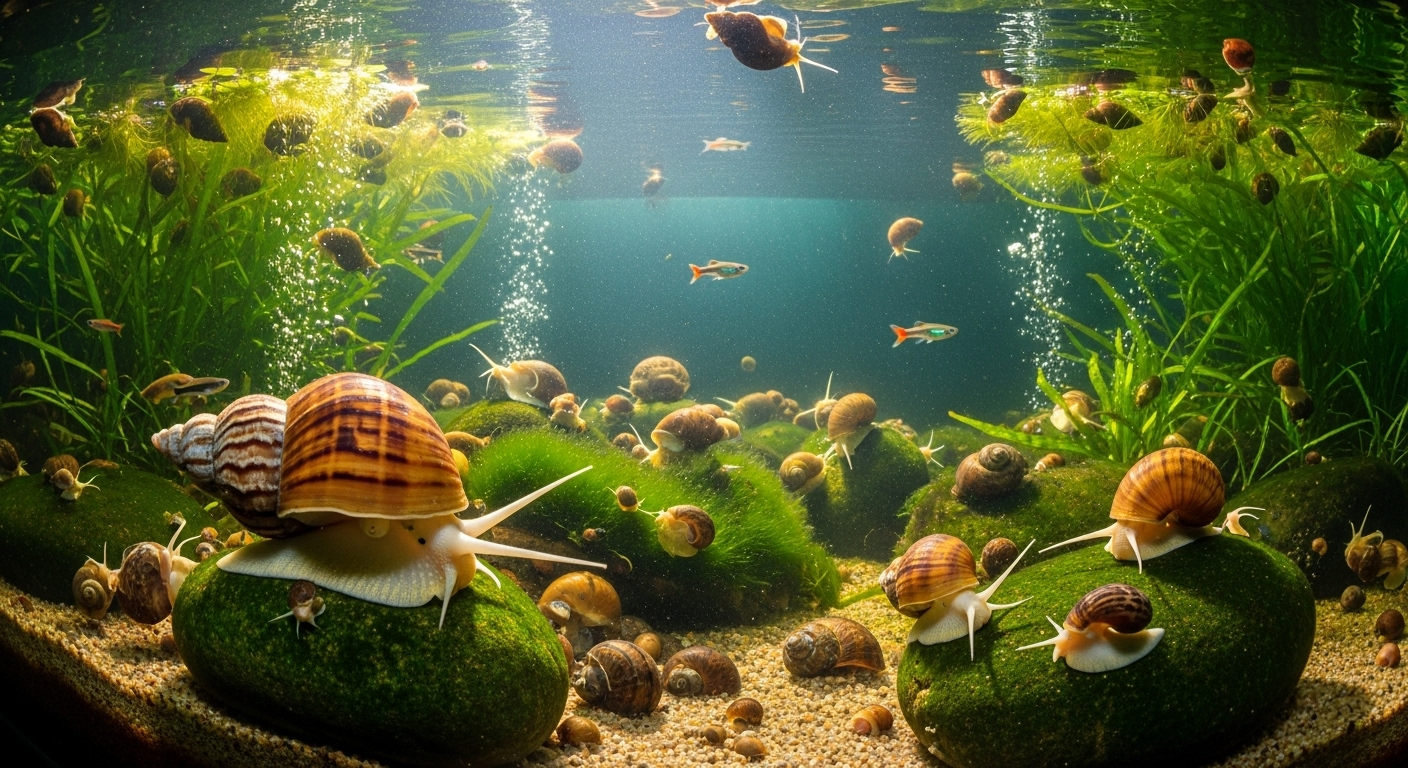The Hidden World of Aquatic Snail Ecosystems
Dive into the fascinating realm of aquatic snail ecosystems, where these often-overlooked mollusks play crucial roles in maintaining underwater balance. From freshwater ponds to coral reefs, snails contribute to nutrient cycling, algae control, and serve as indicators of ecosystem health. Discover the intricate relationships between snails and their aquatic habitats, and learn why these small creatures are capturing the attention of researchers and aquarium enthusiasts alike.

The Diverse World of Aquatic Snails
Aquatic snails come in an astonishing array of shapes, sizes, and colors. From the vibrant blue ramshorn snails popular in home aquariums to the massive apple snails that can reach the size of a tennis ball, these creatures exhibit remarkable diversity. Some species, like the assassin snail, are predators that help control pest snail populations, while others, such as the nerite snail, are prized for their algae-eating abilities.
Ecosystem Engineers at Work
Snails play a crucial role in aquatic ecosystems as nature’s recyclers. They consume detritus, algae, and decaying plant matter, effectively cleaning up their watery homes. This process of consumption and excretion helps to cycle nutrients through the ecosystem, making them available to other organisms. In addition, their constant foraging activities help to aerate sediment, promoting healthy bacterial growth and preventing stagnation.
Snails as Bioindicators
Scientists are increasingly recognizing the value of aquatic snails as bioindicators of environmental health. These creatures are particularly sensitive to changes in water quality, including pollution and pH levels. By monitoring snail populations and studying their shell formation, researchers can gain valuable insights into the overall health of aquatic ecosystems. This makes snails an important tool in conservation efforts and water quality management.
The Snail-Plant Relationship
The interaction between aquatic snails and aquatic plants is a complex dance of mutual benefit and potential harm. While snails can damage plants through their feeding activities, they also play a vital role in plant pollination and seed dispersal. Some aquatic plants have even evolved specific structures to attract snails, using them as a means of reproduction. This intricate relationship highlights the interconnectedness of aquatic ecosystems and the importance of maintaining biodiversity.
Snails in the Aquarium Trade
The popularity of aquatic snails in the pet trade has surged in recent years, with enthusiasts seeking these creatures for both their aesthetic appeal and practical benefits. Prices for common species like ramshorn or mystery snails typically range from $1 to $5 per snail, while rarer or more specialized species can command prices upwards of $20 to $50 each. The global aquarium snail market is estimated to be worth millions of dollars annually, with steady growth projected as more hobbyists recognize the value of these ecosystem-enhancing invertebrates.
Challenges Facing Aquatic Snail Populations
Despite their ecological importance, many aquatic snail species face significant threats. Habitat destruction, pollution, and the introduction of invasive species have led to declining populations of native snails in many areas. Climate change poses an additional challenge, as rising water temperatures and ocean acidification can have severe impacts on snail shell formation and overall health.
Conservation Efforts and Research
Recognizing the critical role of aquatic snails in ecosystem health, conservation efforts are underway to protect vulnerable species and their habitats. Researchers are studying ways to breed endangered snail species in captivity, with the goal of reintroducing them to their natural habitats. Additionally, efforts to educate the public about the importance of these often-overlooked creatures are gaining traction, with citizen science projects inviting individuals to participate in snail monitoring and conservation initiatives.
The Future of Aquatic Snail Ecosystems
As our understanding of aquatic ecosystems deepens, the importance of snails in these underwater worlds becomes increasingly clear. From their role in nutrient cycling to their potential as early warning systems for environmental changes, these small but mighty mollusks are proving to be invaluable allies in our efforts to protect and preserve aquatic habitats. By continuing to study and appreciate the hidden world of aquatic snail ecosystems, we can work towards a more balanced and healthy future for all underwater life.





